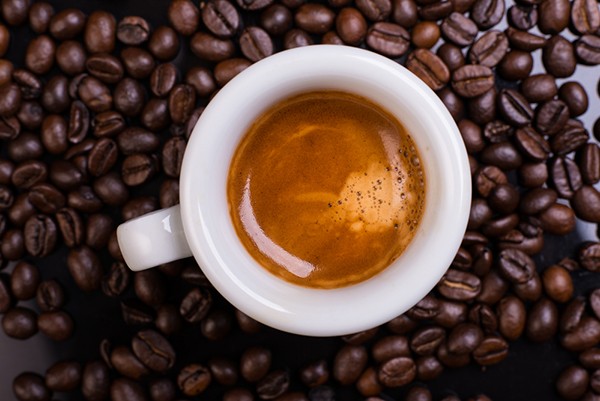Exploring the rich, aromatic realm of coffee, espresso emerges as a profound experience beyond just a beverage. My first encounter with espresso was in a quaint Roman café, nestled along cobblestone streets. Watching a seasoned barista skillfully pull a shot that was both bold and delicate left me mesmerized. That tiny cup held an unparalleled complexity, sparking my enduring fascination with the art and science behind espresso.
The Unique Allure of Espresso
Espresso stands apart not just for its intense, rich flavor but for the meticulous precision in its preparation. This concentrated coffee is served in small, bold shots created by forcing hot water under high pressure through finely ground coffee beans. This method uniquely extracts flavors, resulting in a robust, full-bodied drink layered with depth.
One iconic element of espresso is the crema—the golden-brown foam that crowns a well-extracted shot. Crema serves as a visual hallmark of perfection, indicating that the coffee’s oils have been released optimally. Its velvety texture and slight sweetness balance the espresso’s natural bitterness, elevating the overall experience.
Tracing the Origins of Espresso
The history of espresso began in early 20th-century Italy. Angelo Moriondo designed the first espresso machine in 1884, but innovators Luigi Bezzera and Desiderio Pavoni refined it, revolutionizing coffee preparation. Espresso machines facilitated faster brewing, perfectly suiting the bustling lifestyles of Italian cities. Over time, espresso bars became cultural hubs, offering more than just coffee—a place for quick connections and shared moments.
During my visit to Milan, I experienced how seamlessly espresso integrates into Italian life. Italians treat espresso as a brief but cherished ritual—a quick sip at the counter paired with friendly exchanges before returning to their day. This communal act reinforces espresso’s role as a unifying cultural staple.
Crafting the Espresso Experience at Home
Inspired by my travels, I endeavored to bring the espresso ritual into my home. I invested in a sleek espresso machine, transforming my kitchen into a personal café. Mastering the art of pulling the perfect shot became a rewarding journey of trial and refinement. From achieving the ideal grind size to perfecting water temperature and tamping pressure, every step deepened my appreciation for this intricate craft. Over time, my morning espresso routine became a cherished connection to a timeless tradition.
Espresso as the Cornerstone of Coffee Creations
Espresso’s versatility shines in its role as the foundation of countless coffee drinks. Variations like the macchiato, with a subtle dollop of steamed milk, or the cappuccino, where espresso harmonizes with equal parts steamed milk and foam, highlight how espresso caters to diverse tastes while preserving its essence.

Exploring Bean Origins and Roasting Profiles
Delving deeper into espresso, I became captivated by the origins and roasting profiles of coffee beans. The flavor of an espresso shot can vary significantly based on the beans’ origin and roast. Ethiopian beans often deliver vibrant, fruity notes, while Brazilian beans lean toward nutty, chocolate-like flavors. Roast profiles also influence taste, with lighter roasts accentuating a bean’s natural characteristics and darker roasts emphasizing deeper, caramelized notes.
Supporting Sustainability and Ethical Sourcing
My growing appreciation for espresso also brought an awareness of sustainability and ethical sourcing. I sought out roasters committed to fair trade and environmentally responsible farming. Knowing that my daily espresso supports sustainable practices added a meaningful dimension to my ritual, connecting me to the hands and lands behind each cup.
The Precision Science of Espresso-Making
Espresso-making blends art with meticulous science. A standard shot requires about 7 grams of coffee, with extraction ideally taking 20–30 seconds. Small deviations in grind size, tamp pressure, or timing can significantly affect the outcome, leading to either a sour under-extracted shot or a bitter over-extracted one. Achieving balance requires precision, but the reward of a flawless shot is unparalleled.
Experimenting with Alternative Brewing Techniques
While traditional espresso requires specialized equipment, alternative methods like the Moka pot or AeroPress can produce similarly concentrated coffee experiences. These tools are excellent for capturing the intensity of espresso-like flavors when traveling or away from my home machine, offering versatility and convenience.
Sharing the Joy of Espresso
One of my greatest joys is sharing espresso with friends and family. Hosting gatherings where I serve a variety of espresso-based drinks allows me to introduce others to this extraordinary beverage. Seeing someone light up after tasting a perfectly crafted shot for the first time is immensely rewarding.
Espresso’s Broader Culinary Influence
My appreciation for espresso has enriched other culinary experiences. Developing a refined palate through espresso tasting has heightened my ability to detect subtle flavors in food and wine. This expanded awareness has deepened my overall enjoyment of gastronomy, enhancing my appreciation for the art of flavor.
:max_bytes(150000):strip_icc()/__opt__aboutcom__coeus__resources__content_migration__serious_eats__seriouseats.com__2018__06__20180613-coffee-vs-espresso-vicky-wasik-3-1500x1125-418fa2a14e7249b18040c2c34bf8569c.jpg)
Reflecting on the Journey of Espresso
Espresso is far more than a drink—it is a passion encompassing history, culture, science, and community. Each cup is a celebration of life’s simple pleasures, a testament to the impact of curiosity and dedication. From farmers cultivating beans to baristas perfecting their craft, every espresso carries a story.
As I continue exploring and learning, I find that espresso, like life, balances precision with artistry. It’s about savoring the moment and embracing the journey. Whether enjoyed in a bustling café or my quiet kitchen, espresso remains a treasured ritual and a profound expression of the human experience.
